Tejpatta (Bay Leaf): Benefits, Side Effects, Nutritional Value & More
By Dr Rajeev Singh +2 more

Get,

to manage your symptom
Get your,


4 Cr+ families
benefitted

OTP sent to 9988776655



You’ve successfully subscribed to receive
doctor-approved tips on
Whatsapp

Get ready to feel your best.

Hi There,
Download the PharmEasy App now!!


Register to Avail the Offer
Send OTPBy continuing, you agree with our Privacy Policy and Terms and Conditions

Hi There,
Sign up on PharmEasy now!!
Trusted by 4 crore+ families

OTP sent to 9988776655



You have unlocked 25% off on medicines




Code: NU25
By Dr Rajeev Singh +2 more
Table of Contents
Tejpatta is the dried leaves of the plant Cinnamomum tamala. It belongs to the family Lauraceae and genus Cinnamomum which has around 270 species of plants that grow authentically in Asia and Australia.
Tejpatta is also known as Indian bay leaf is a small evergreen or perennial tree, which means it grows throughout the year and bears fruits every year of its life span.
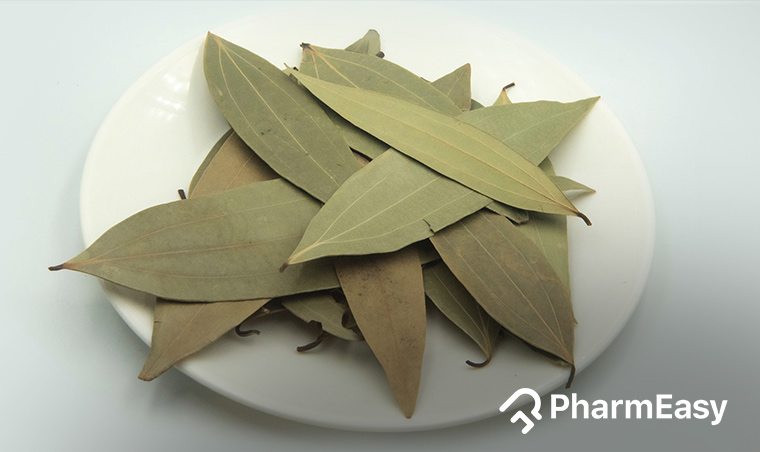
Typically, the tree grows up to 12 meters in height and the leaf of this tree is around 12-20 cm long and 5-8 cm wide in the center with three long nerves running from the base to the apex of the leaf.
The Indian Bay leaf grows naturally in the North-Western Himalayan region, Sikkim, Assam, Mizoram, Meghalaya, tropical and sub-tropical Asia, South Asia, the Pacific region, and Australia. As a spice, it is used in various cuisines, especially in northern Indian food and it imparts an aromatic odor and taste1.
The India Bay leaf is known by various English names like
It is also known by various names in the vernacular languages of India like
Over the years, I have observed that bay leaves might have a notable effect on the gastrointestinal system. It has been suggested that they might act as a diuretic, promoting increased urine production and potentially aiding in the elimination of toxins from the body.
Dr. Siddharth Gupta, B.A.M.S, M.D (Ayu)
Portion Size: 1 tsp = 0.6 g
Amount per Portion:
Portion Size: 1 tsp = 0.6 g
Amount per Portion:
The herb has diverse potential benefits and uses and benefits which are as follows2,5,6,7:
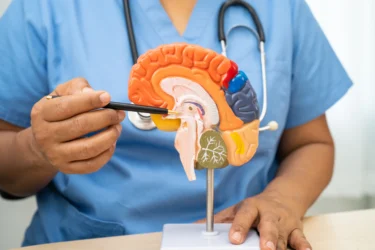
Many studies show that the Indian bay leaf extracts possess anti-depressant effects, that is it can elevate the person’s mood. It may have anxiolytic (reduces anxiety) effects, meaning it can produce calmness in a person experiencing anxiety. Thus, it may have some effect in the management of some psychological disorders5. However, you need to reach out to your healthcare provider if you experience psychological problems.
In my experience, I have observed that bay leaf essential oil might have anticonvulsant properties. This means that it could potentially help in reducing or avoiding seizures completely. It is believed that certain components present in the essential oil, such as eugenol, pinene, and methyleugenol, are responsible for this effect.
Dr. Rajeev Singh, BAMS

This plant has skin-brightening properties, as may have negative activity of the enzyme tyrosinase which is needed to produce melanin which is the dark pigment present in the skin5,6. Tejpatta oil may also be useful for eczema-like skin disorders where the skin is dry and flaky2. These potential benefits may be due to its antioxidant, antimicrobial, and anti-inflammatory properties. The leaf may be used to help against head lice due to its potential insecticidal activity7. You are advised to consult with a doctor if you encounter any such infestation as it may be disturbing.

It may help to lower blood sugar levels due to its antioxidant properties which may also have some effect on the body to use insulin better. It is may help to lower cholesterol and triglyceride levels as well when given to diabetic patients. Larger human studies could help demonstrate the efficacy of tej patta in preventing damage to vital organs due to long-standing diabetes. Therefore, avoid using tej patta or other herbal remedies for diabetes without talking to your healthcare provider.
Based on my experience, I have observed that Laurus nobilis (bay leaf) essential oil might exhibit antiviral properties against SARS-CoV and HSV-1. The constituents of the essential oil, such as beta-ocimene, 1,8-cineol, alpha-pinene, and beta-pinene, are believed to contribute to this antiviral effect.
Dr. Smita Barode, B.A.M.S, M.S.
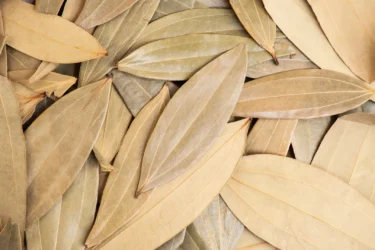
Tejpatta may have some potential effect as an insect repellent as it contains lauric acid which gives it the insecticidal property. It may have properties to repel mosquitoes and to protect grains like wheat, rice, oats, and barley from insects7. More studies are required to support the use of tej patta as an insect repellent.

The herb may have potential benefits in treating the common cold as it reduces the running nose which is the primary symptom experienced by patients. It may be beneficial in bronchial asthma by reducing cough. It may also have some effects in cases of complications of tuberculosis. Due to its Kapha balancing property, it can potentially control the cough, may help release mucus, and may clean the air passages; therefore, it may be useful in all the above-mentioned conditions2. However the data available about its benefits on humans seems to be insufficient thus, avoid using tej patta or other herbal remedies for the lungs without talking to your healthcare provider.

Tejpatta has been studied to reduce the bad cholesterol that is LDL-cholesterol increase good HDL cholesterol and reduce triglycerides. Therefore, it may help in reducing the risk of heart disease2,5,6. The effect of the blood sugar levels and the cholesterol level may make it cardio-protective which means it may help in protecting the heart. However, more research is required to ascertain the above-mentioned potential uses. You should consult a doctor for serious conditions such as cholesterol levels which must be diagnosed and treated by a doctor.
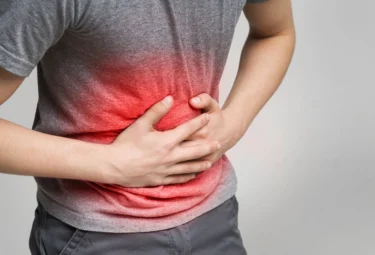
The ethanolic extract from this plant may show anti-ulcer action probably because it reduces acidity and has antioxidant action2,5,6. However, you need to reach out to your healthcare provider if you experience stomach problems.
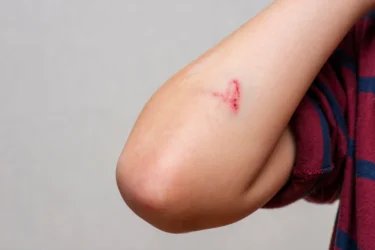
Due to its potential antioxidant, anti-inflammatory, antimicrobial, and immunomodulatory effects, it may shorten the process of wound healing for minor cuts2,5,6. We need further studies to establish this fact.

This herb contains many compounds that reduce the damage caused by free radicals and reduce the risk of cancer2,5,6. You are advised not to use any herbal remedy to cure or prevent cancer without consulting your doctor.
Though there are studies that show the potential use of tejpatta in various conditions, these are insufficient and there is a need for further studies to establish the true extent of the benefits of tejpatta on human health.
You must consult a qualified doctor before taking tejpatta or herbal supplements. Likewise, do not discontinue or replace an ongoing treatment of modern medicine with an ayurvedic/herbal preparation without consulting a qualified doctor.
People may react differently to common herbs and foods. Therefore, if you experience any side effects after using fennel seeds, you should immediately reach out to your healthcare provider.
Also Read: Shankhpushpi – Benefits, Side Effects, Precautions & More
Tejpatta is a type of Bay leaf also called the Indian Bay leaf (Cinnamomum tamala)3.
Yes, they are different. Dalchini is the dried bark of a small tree called Cinnamomum zeylanicum while Tejpatta is the dried leaves of a tree called Cinnamomum tamala (Indian bay leaf)12.
Tejpatta and cinnamon are different. Tejpatta is the dried leaves of Cinnamomum tamala which belongs to the genus Cinnamomum. This genus has around 270 species of plants under it. The dried bark of the tree Cinnamomum verum (synonym Cinnamomum zeylanicum) is the one that is commonly known as the true cinnamon1,12,13.
The tree requires ample sunlight and must be planted at a spacing of 3 x 2 m in regular plantations. The seeds are sown closely on prepared beds during the month of June, and it takes 2-3 weeks for the seeds to develop into seedlings. When seedlings reach a height of 15 cm or turn four months old, they are shifted into polythene bags of 30×15 cm in size. Then, after 10-12 months, they are planted in the main field and take 6-9 years to attain the harvestable stage that is the leaves can be harvested when the trees turn 8-10 years. The leaves are usually harvested from the month of October to December and in some places, the collection is continued till March10.
Yes, only in the amount that is added in food and ground leaf for short periods can be consumed, the raw whole leaf is not to be eaten it is very difficult to digest the leaf and it may get stuck in the throat or damage the lining of the gut8.
Mainly the leaves and the bark of the herb may be used in various herbal benefits and food preparations7.
Disclaimer: The information provided here is for educational/awareness purposes only and is not intended to be a substitute for medical treatment by a healthcare professional and should not be relied upon to diagnose or treat any medical condition. The reader should consult a registered medical practitioner to determine the appropriateness of the information and before consuming any medication. PharmEasy does not provide any guarantee or warranty (express or implied) regarding the accuracy, adequacy, completeness, legality, reliability or usefulness of the information; and disclaims any liability arising thereof.
Links and product recommendations in the information provided here are advertisements of third-party products available on the website. PharmEasy does not make any representation on the accuracy or suitability of such products/services. Advertisements do not influence the editorial decisions or content. The information in this blog is subject to change without notice. The authors and administrators reserve the right to modify, add, or remove content without notification. It is your responsibility to review this disclaimer regularly for any changes.
Comments

Leave your comment...
You may also like
Comments